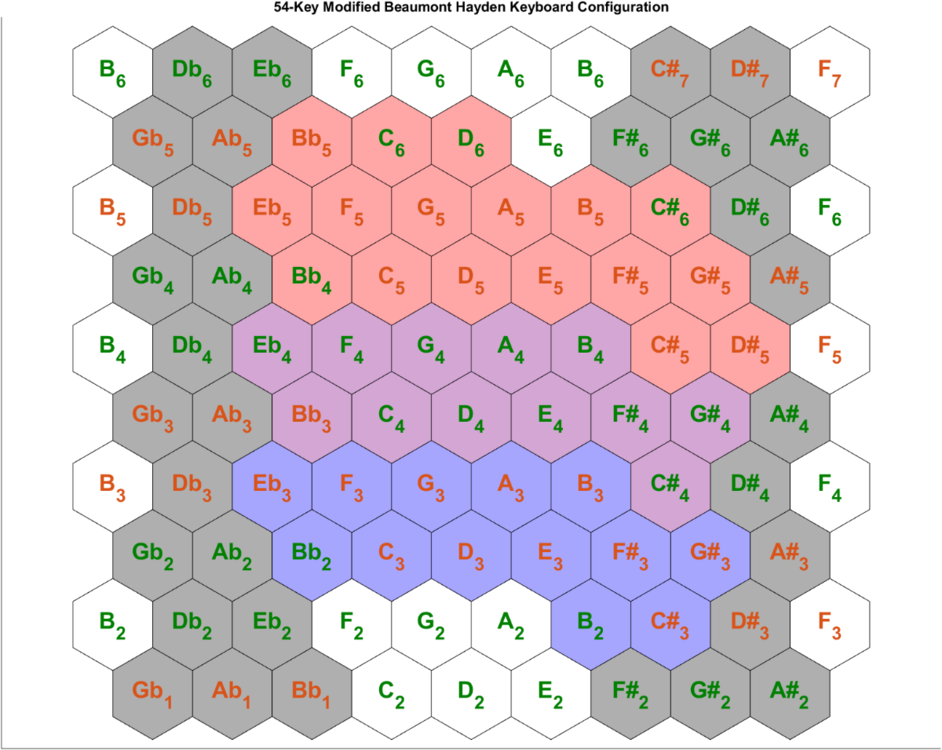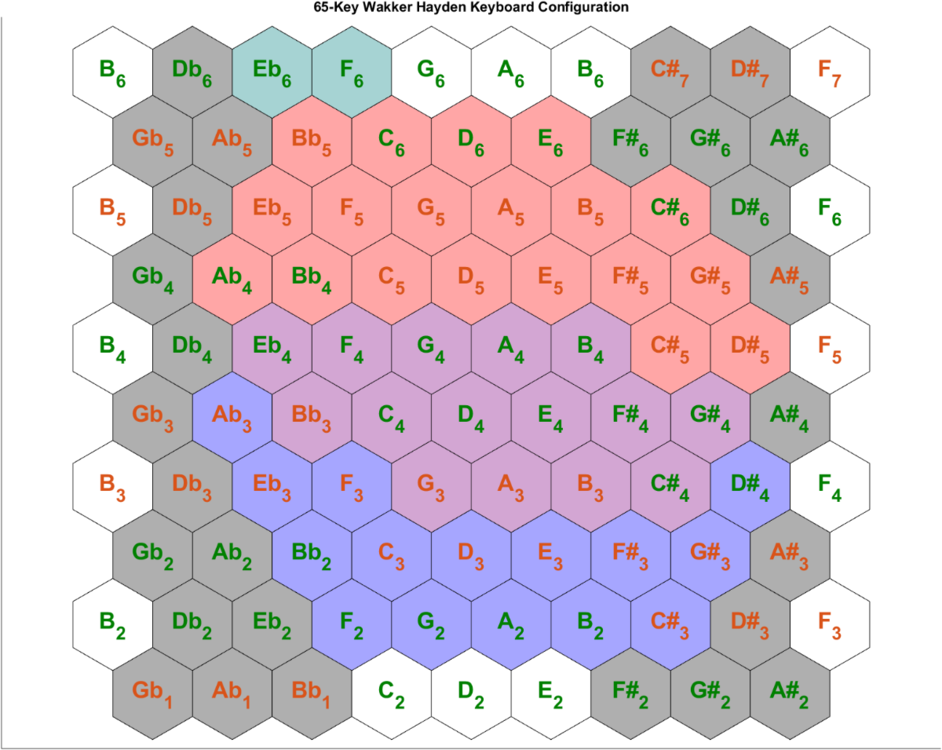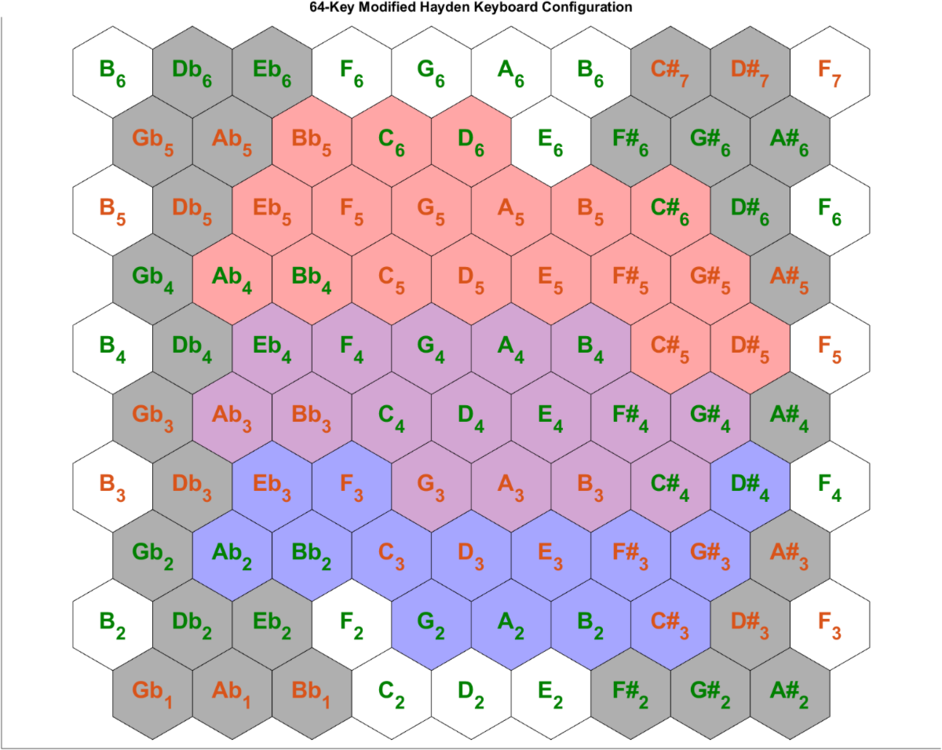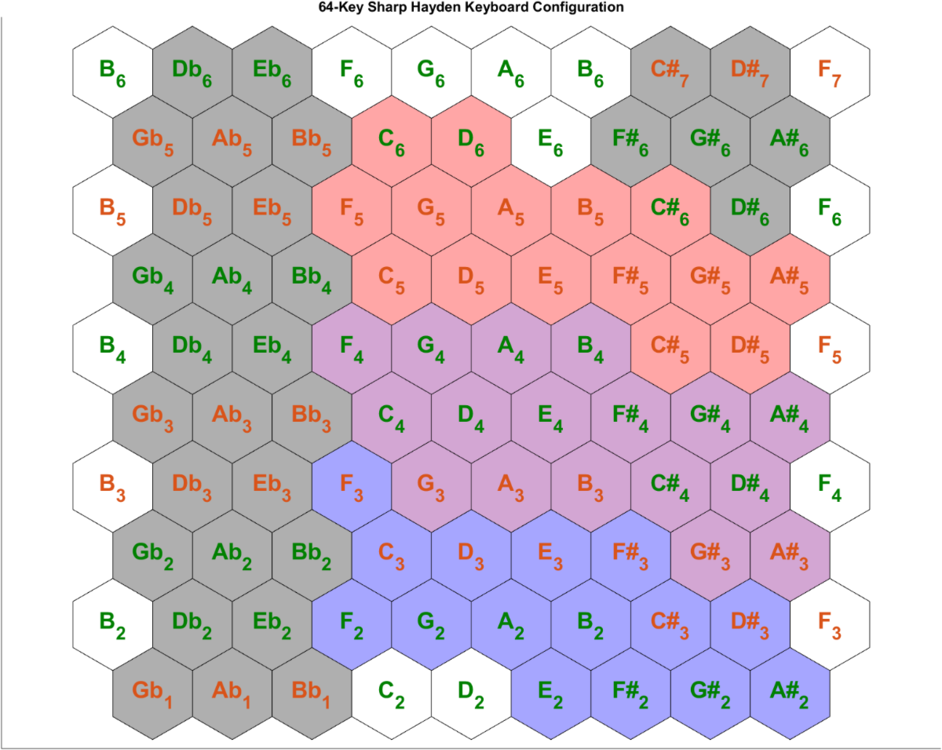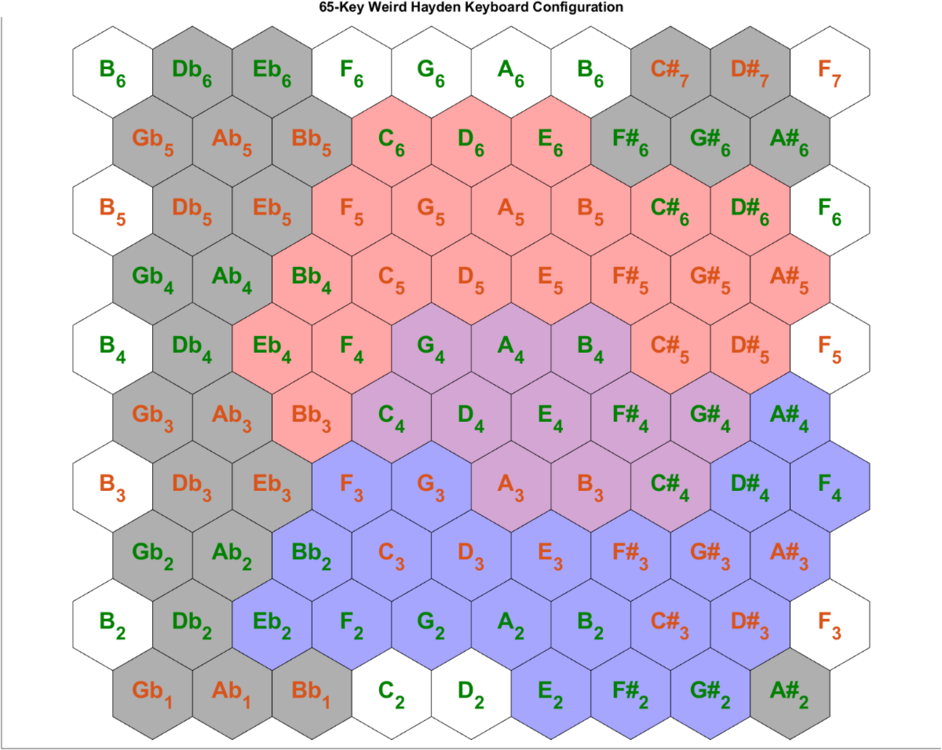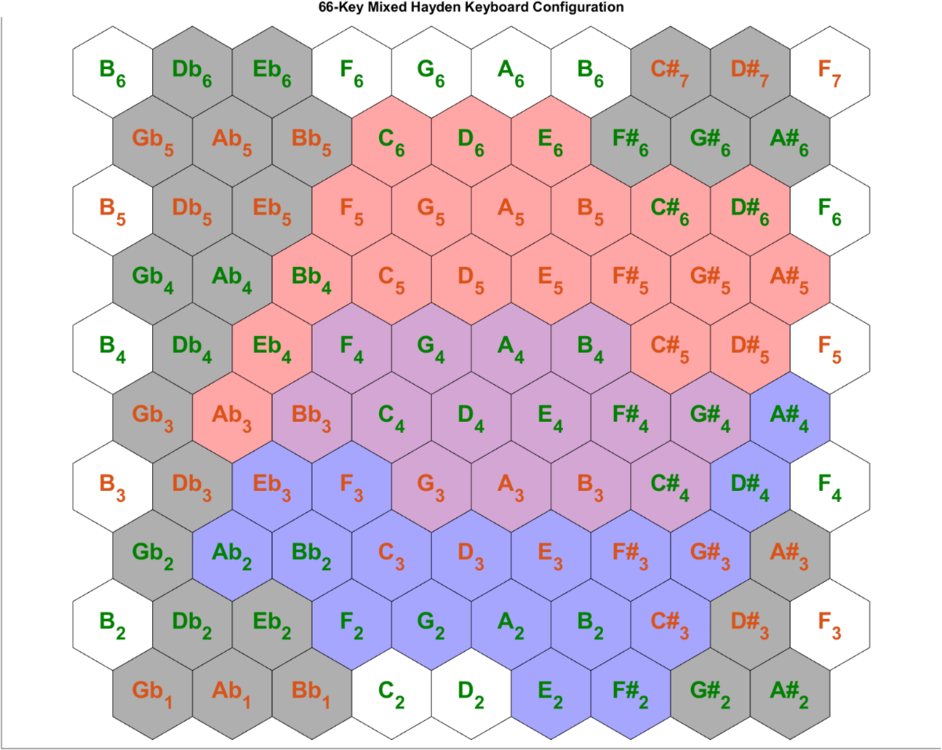Search the Community
Showing results for tags 'keyboard'.
-
Hello! Been reading obsessively for a little while, but now I finally decided to make an account so I could ask a few of my own questions! I recently got my first concertina, a Rochelle-2 Anglo, and I love it! The only problem is that my brain doesn't work that way, thus for me the Anglo system is surprisingly unintuitive. So, after talking a bit with a maker, I'm in the process of getting a Hayden Duet made! Only problem now is figuring out the keyboard... Before I bombard you with diagram-punctuated rambling, a little background: I'm a pianist, have been for most of my life. I've been fascinated by accordions and concertinas forever, but only recently realized I could just hop in whenever I wanted! There is no specific genre or genres I play, I'm all over the place, so versatility is important to me -however white and whaley that may be in such a compact instrument. Anyway, to the layouts! I started with the 52K layout from the Morse Beaumont, and seeing that the range had a couple holes at the bottom I added a low B and C# to make it chromatic: (right is red, left is blue, overlap is purple, and octaves have alternating green and orange labels) Then I tried eliminating the overlap by shifting the left hand down an octave, but when I tried to figure out how I would play a few songs on it I quickly understood how important that overlap is. So for a moment I thought this 54K layout was perfect, but then I got two thoughts in my head: The left hand doesn't go down very far, and it's missing Bb/A#4. So I started looking for other references for a Hayden layout and found the 65K layout used by Wakker: I found it interesting how the extra buttons were used as much to fill out the existing accidentals as they were to extend the range, and the more I learn about the Hayden layout the more that makes sense to me. But I see a lot of compromises here that I don't like: Missing F#2, G#2, and Bb4 on the left, G#3 on the right, the bisonoric Eb/F, and a lot of duplicated keys which, while great for transpositional invariance, could have been used to make it chromatic. (I actually don't know if Wakker uses linked buttons for duplicate notes, I wonder...) So I made a couple modifications: Much better for my purposes, but I still wasn't very happy with it. The left hand still didn't go quite as low as I wanted (E2 would be perfect), I had a few duplicate notes I wasn't sure would actually help, and I was starting to notice something else: The cut-down Hayden layouts tend to be very inconsistent from octave to octave. For instance, B major looks very different between B2 and B3 on the left. The example layouts I've found tend to exacerbate that problem more, and the way I've been adding notes tends to even it out, but you really can't get away from that problem completely without adding 19 buttons per octave! I tried to mitigate the non-uniformity by using only sharps, and seeing as I eliminated a lot of duplicates I extended the range down to E2: Now it's consistent, but no less limited. It breaks down with F major and the common Bb major, and fixing that uniformly would mean adding a lot of duplicates! Enter the weirdest and most interesting reference layout I've looked at: It's very sharp-biased but not totally, it has almost the range I want (both more and less), but it's... weird. I really don't like pushing the left F4 all the way over to the sharps, I don't need the low Eb, and I'd like fiddle G on the right. I ended up with this: I think this is the best tradeoff between range, uniformity, and isomorphism out of any of the layouts I've considered so far (while being totally chromatic so my brain doesn't get confused). I'm not sure about the high E and D#, I guess I'll have to figure out how significant those two reeds are for construction, but I don't see how I could improve this without adding way too many buttons or compromising the range. I also think ~64-66 buttons is approaching the edge of where I'm confident I won't get helplessly lost in the button field. So, my question: I'm still very new, so to those of you who play Hayden duet, what do you think of this? Am I making any big mistakes? Is there anything I'm not aware of or haven't thought of? ... do you like my graphs?
-
Long time lurker here, hope to post more in the future. I've been playing a C/G hybrid for about a year now and have come to the tentative conclusion that for my primary use case (Morris), I'd be better off with a G/D since I want to be able to play harmonies and chords with other morris musicians. I've gotten to a point where it's easy enough to play our repertoire tunes in C or F harmonically, but if I stay in G my options are much more limited and I tend to end up playing melody only, which isn't terribly interesting for me. Opinions on this conclusion are welcome, of course, but onto the main question: Sometimes I'll see a used G/D for sale, but half the time it's got a Jeffries layout. I'm much more comfortable with Wheatstone, but I don't want to always be passing up a good deal if it would be easy/affordable to have it converted. So... would it be? I'm mainly talking about hybrids here since they're affordable and readily available; I understand the reed pans are a different beast from those in "nice" concertinas. But since I also want to invest in a nice one at some point, the question applies there, too. Much obliged for any advice from all you sages on the forum. Luke
-
Hello I’m new to this so I fear this may be a dumb question but in any case... Does anyone know why some of the key positions on my Wheatstone Duet (serial 26008) were changed? I’ve attached a drawing showing the changes vs. the standard keyboard lay out shown for a 56 key Wheatstone in Ernest Rutterford’s Tutor for the Duet... 1) the C# and C on the left hand 1st and 2nd columns, bottom row are switched 2) the B flat and G# on the right hand, 1st and 4th columns, top row are switched. 3) the left hand D# has been moved from the bottom of column 3 to column 4 and 4) an extra F was added to the right hand bottom of column 5 along with a Whistle key near the air key. Would all these changes have been ordered to accommodate the buyer’s personal preference to make it easier to play a particular type of music, or am I using the wrong chart? For quite a while I kept thinking I hadn’t found the right keyboard chart but after reading Jim Lucas’ posting on October 24, 2014 about the Macann Duet keyboards I’m now wondering if the placement wasn’t customized. My thanks for any help you can give me. - Wes filename-1-3.pdf
- 2 replies
-
- Keyboard
- Wheatstone
-
(and 2 more)
Tagged with:
-
I have a Wheatstone Aeola duet, 65 keys that had the keyboard layout modified in the 1940's by a Mr R G Cheeseman who entertained in South Australia during the war. The quickest way of describing the layout is that to play a natural scale 3 adjacent keys are played in order starting from the tonic, move up a row and play 4 adjacent keys, move up and play 3 to continue. This pattern is repeated for most major keys starting from the tonic. It is similar to the 5 row continental system in accordians (I think) and is easy to pick up and play tunes you already know. My question is would it be preferable to revert to a standard layout because since many of the reeds have been moved the voicing of individual notes maynot be optimal. Some of the reed frames were too long for the slot so they were filed to clear the bellows frame (shudder!). I've had it too long and want to start playing it again. Thanks for any suggestions. Also Happy birthday, Geoff. Long time since we talked.


